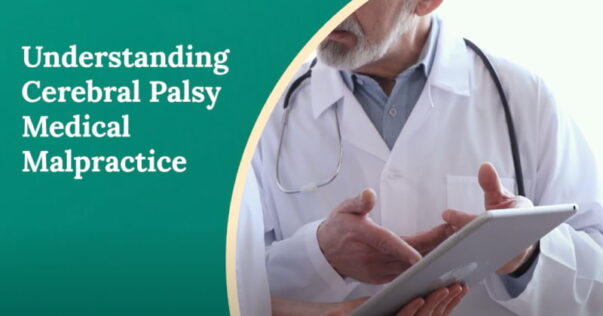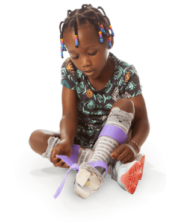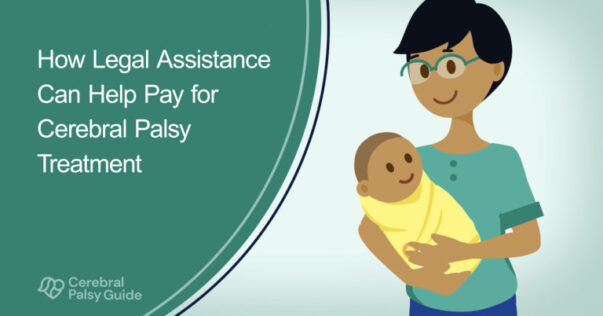What is cerebral palsy medical malpractice?

Cerebral palsy medical malpractice occurs when a hospital, doctor, or other health care professional causes the condition to occur through a negligent act during the birthing process.
A cerebral palsy medical malpractice claim must prove that:
- The medical professional had a duty to provide care to the patient (doctor-patient relationship)
- The medical professional's actions (or omissions) fell below the accepted standard of care, causing a breach of duty
- There was a direct link between the CP diagnosis and negligence
If you suspect that a delivery doctor, nurse, or medical facility caused your child’s cerebral palsy, you may have legal options.
Learn how medical malpractice can lead to cerebral palsy that could have been avoided. If your child was harmed, you may be able to access financial aid. View Transcript.
Duration: 1 min 14 sec
Medical malpractice can take many forms, including failures that should never happen. Sadly, when these failures occur during childbirth, the results can be catastrophic, causing cerebral palsy that could have been prevented with proper care. These failures can include:
Failure to detect and properly treat infections, putting innocent lives at risk.
Fetal distress should never go unnoticed, denying babies the vital oxygen they need.
Failure to schedule or perform a necessary cesarean section, endangering both the baby and the mother.
Failure to detect a prolapsed umbilical cord, a dangerous situation that demands immediate attention.
Improper use of delivery tools, like vacuum extractors and forceps, causing irreversible harm.
At Cerebral Palsy Guide, we understand the devastation that arises when preventable medical mistakes during childbirth lead to cerebral palsy. Our dedicated team is here to fight for justice on behalf of families like yours.
Contact us today. We're here to help you and your family.
Families often have many unanswered questions following a CP diagnosis. While the causes of cerebral palsy are not always known, the reality is that health care providers may cover up their mistakes.
If you have questions, our labor and delivery nurses can help. They have years of experience helping families with cerebral palsy medical malpractice cases and are ready to talk with you in confidence.
Connect with one of our labor and delivery nurses now.
Forms of cerebral palsy medical malpractice
Brain damage causing cerebral palsy can be the result of medical errors or negligence that occurred before, during, or shortly after the birthing process.
Examples of medical malpractice that commonly cause cerebral palsy include:- Failure to detect fetal distress, such as lack of oxygen (hypoxia)
- Failure to detect and/or properly treat infections
- Failure to detect umbilical cord prolapse (when it drops down before the baby)
- Failure to schedule or perform a necessary cesarean section (C-section)
- Injury through improper use of delivery tools, such as forceps delivery complications
The infographic below includes data from a study by the TDC Group (a physician-owned insurance company) highlighting the contributing factors of injury for the newborn age group (less than 1 month old).
Contributing factors of injury for neonate age group (<1 month):
If you have any reason to believe your child’s condition was preventable, you may be able to seek compensation through a cerebral palsy medical malpractice lawsuit.
Get a confidential and free consultation now.
What is a cerebral palsy lawsuit?
A cerebral palsy lawsuit is a type of medical malpractice claim filed against medical professionals responsible for a child's condition.
By filing a cerebral palsy medical malpractice lawsuit, families can seek financial compensation to cover their child's medical care, including therapies, treatments, and other necessary expenses.
According to the TDC Group, the average medical malpractice payout for children under 1 month is $936,843.
The lawsuit process typically involves a free case review, gathering evidence, filing the lawsuit, and working to negotiate a cerebral palsy settlement.
Cerebral palsy lawsuit settlements
A cerebral palsy settlement is an agreed-upon payout negotiated between the plaintiff (usually parents or caregivers) and the defendant (medical professional, facility, or their insurers).
Settlements are offered to families in cerebral palsy lawsuits as a way to provide financial support to cover treatment costs.
Cerebral palsy settlements often occur out of court but can also be negotiated while a trial is underway.
Cerebral Palsy Guide has partnered with some of the best cerebral palsy medical malpractice law firms in the country. Together they have recovered over $862 million for families affected by birth injuries.
- $10.4+ million for a family in Pennsylvania
- $9 million for a Colorado family
- $7.8 million for a Florida family
- $6 million for a New York family
- $4.1 million for a family in New Jersey
Reaching a settlement can reduce the length of time of a lawsuit, offer certainty about compensation, and spare the emotional burdens of a court trial.
Find out if your family is eligible to pursue a cerebral palsy settlement. You may be able to access financial support to help your child live their best possible life.
Get a free case review now.
Can a hospital cause cerebral palsy?
Yes, a hospital can be liable for cerebral palsy medical malpractice. Birth injury lawsuits are often filed against multiple defendants, including individual physicians and the hospital as a whole.
Hospitals are expected to have policies and practices in place to avoid any instances of patient harm. They are also required to provide all patients with a safe and sterile environment.
Additionally, hospitals are responsible for hiring staff with appropriate medical education, training, and licensing. The hospital can be held legally accountable if a staff member does not meet the requirements to practice.
Hospitals can also be held responsible for a birth injury caused by a lack of on-duty medical professionals. The hospital has a duty to ensure that there are enough staff members at all times to keep patients safe.
Symptoms of cerebral palsy
Children that sustain birth trauma have a higher risk of developing conditions related to permanent neurological damage, such as cerebral palsy.
However, cerebral palsy is not always diagnosed right after childbirth. Therefore, parents and caregivers should look for signs of a brain injury that could be cerebral palsy symptoms.
- Arched back while crying
- Excessive drooling
- Hands curled into a claw
- High-pitched crying
- Low heart rate
- Low oxygen levels
- Muscle stiffness or looseness
- Seizures
- Sensitivity to light
- Weak or absent reflexes
These can be signs of a birth injury and could indicate the presence of cerebral palsy or other forms of brain damage. And in many cases, these health conditions could have been prevented with proper medical care.
How can a cerebral palsy claim help me?
Compensation from a successful cerebral palsy medical malpractice claim can help cover lifetime care for your child.
Watch our short video to learn more about how filing a cerebral palsy medical malpractice claim can help your family.
Learn what types of medical negligence can cause cerebral palsy and how to pursue financial compensation for your child’s treatment. Call us for legal help today at (855) 220-1101. View Transcript.
Duration: 1 min 29 sec
Cerebral palsy, or CP, is a lifelong condition that can require constant care and treatment.
It is also expensive. “How expensive?” you may ask.
Between therapy, medications, and special home accommodations, the CDC estimates that the lifetime cost to care for someone with CP is over 1.6 million dollars!
Understandably, many parents and family members aren’t prepared to pay for these unplanned medical expenses. Seeking legal aid can help families get much-needed compensation if there is evidence their child’s condition could have been prevented.
A qualified birth injury lawyer can figure out whether an act of negligence led to your child’s cerebral palsy.
Some examples of medical negligence include:
- Failing to detect infections during pregnancy
- Missing signs of fetal distress or lack of oxygen
- Neglecting to perform a C-section in a timely manner
- Using excessive force during delivery
- Neglecting to monitor a mother or baby’s heart rate during labor and delivery
- Improperly using forceps or vacuum extractors during delivery
- And failing to treat severe newborn jaundice
The best way to find out if your child is eligible for legal aid is to speak with a birth injury lawyer.
Contact us today for a free case evaluation and see if you’re entitled to compensation that can help your child get life-changing care.
Filing a cerebral palsy medical malpractice claim
Your birth injury attorney will take care of all the paperwork and legal heavy lifting to file your cerebral palsy medical malpractice claim so you can focus on caring for your child.
An experienced cerebral palsy lawyer will work to find enough evidence to make your case as strong as possible.
- Imaging test results
- Medical bills
- Photographs
- Prenatal and birth records
- Other forms of documentation
Remember: It is critical to file your cerebral palsy claim within your state’s statute of limitations. These laws put a strict time limit on how long you have to file your lawsuit.
If you miss your deadline, you may be forever prevented from taking legal action for your child.
Connecting with an experienced cerebral palsy lawyer right away is often the best step.
Find out if you have a legal case
The best way to know whether you are eligible to file a cerebral palsy medical malpractice lawsuit is to get a free case evaluation.
Negligent medical professionals should be held responsible for cerebral palsy medical malpractice. Working with an experienced cerebral palsy law firm will ensure your case has the best chance for success.
Get a free case review today to learn more about cerebral palsy medical malpractice and find out if you are eligible for financial compensation.




